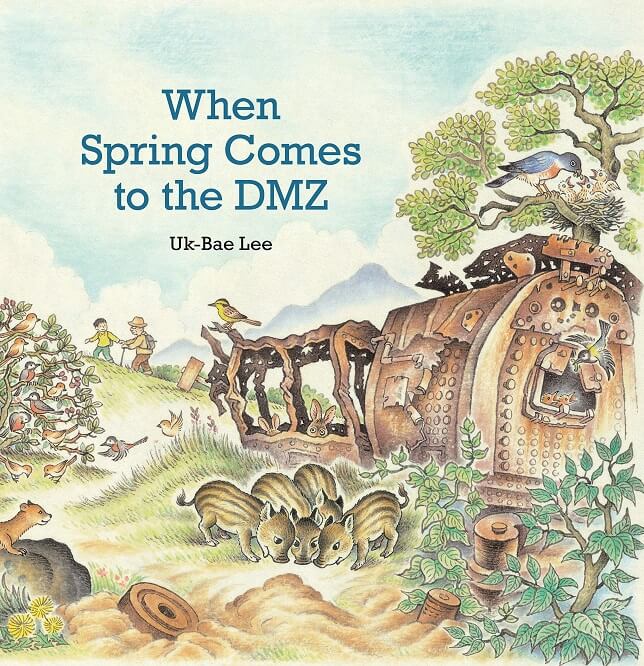30 Jan / When Spring Comes to the DMZ by Uk-Bae Lee, translated by Chungyon Won and Aileen Won [in Shelf Awareness]

 When the Korean peninsula was divided into North and South in 1953, the consequences were especially tragic for separated families. In the six-plus decades since the ceasefire, reunion – politically and personally – has proven virtually impossible. On either side of the Military Demarcation Line, both North and South Korea built fences approximately 1.25 miles from the actual line, stretching 154 miles across the peninsula. Ironically, this Demilitarized Zone (DMZ) has flourished as an untouched haven for flora and fauna: the coastal seals, migrating birds, otters, salmon, mountain goats, and water deer all thrive here, oblivious of the man-made borders surrounding them.
When the Korean peninsula was divided into North and South in 1953, the consequences were especially tragic for separated families. In the six-plus decades since the ceasefire, reunion – politically and personally – has proven virtually impossible. On either side of the Military Demarcation Line, both North and South Korea built fences approximately 1.25 miles from the actual line, stretching 154 miles across the peninsula. Ironically, this Demilitarized Zone (DMZ) has flourished as an untouched haven for flora and fauna: the coastal seals, migrating birds, otters, salmon, mountain goats, and water deer all thrive here, oblivious of the man-made borders surrounding them.
People, too, arrive at the DMZ, albeit under highly different circumstances. “When spring comes to the DMZ,” while nature rejuvenates, “soldiers check the fence/ and fix the broken places.” With the milder weather, “Grandfather climbs up/ to the DMZ observatory / and looks at the northern sky. “As seasons change, soldiers “undergo exhausting training” in summer, practice tank and plane maneuvers in autumn and “think of their homes” in winter. Without fail, “Grandfather climbs up to the DMZ lookout again,” to gaze longingly at the “northern land.” As another year passes and spring returns, Grandfather’s only wish is to bypass the lookout, “fling the tightly locked gates wide open” … and share the same freedom as the nearby animals.
Internationally award-winning author/artist Uk-Bae Lee has never known a united country. He channels a hope for reunion into When Spring Comes to the DMZ, originally published in his native South Korea in 2010 as part of the Peace Picture Book Project, featuring illustrators from Korea, China and Japan. His text, smoothly translated by Chungyon Won and Aileen Won, is understated and simple, with further resonance presented through his multi-layered illustrations. The reader’s first glimpse of the DMZ, for example, is the same as Grandfather’s, the lush, green landscape seen through two circles entirely surrounded by black – mimicking the view from Grandfather’s binoculars. Additionally, during Grandfather’s autumn visit, a blond man and his child gaze outward, while Grandfather pointedly regards a single leg garbed in white-starred blue pants and a red shoe as it moves off the page; the foreign presence is undeniable, with the possible implication that a U.S. exit could be imminent or, in Grandfather’s opinion, even necessary.
Grandfather’s – and Lee’s – persistent dream of reunification of a fractured homeland manifests in the penultimate spread, which opens like a magic portal, the rusted, over-secured fence folding out to a tranquil kingdom where war weapons have long broken down into obsolescence. Grandfather and grandson tread a path linking the pair to another grandparent and grandchild coming from the other side, until the pages fold over to confirm a joyous, long-overdue family reunion. As if inserting a final reminder to the powers that be, the world map on the back inside cover is subtly transformed with an unbroken Korean peninsula. With gentle words and glorious art, Lee inspires the newest generation of readers to lead the way … and make such miracles happen.
Shelf Talker: Throughout the seasons, Grandfather journeys to Korea’s DMZ to gaze upon the northern lands he can visit only with his eyes and heart.
Review: “Children’s Review,” Shelf Awareness Pro, January 30, 2019
Readers: Children
Published: 2019 (United States)
